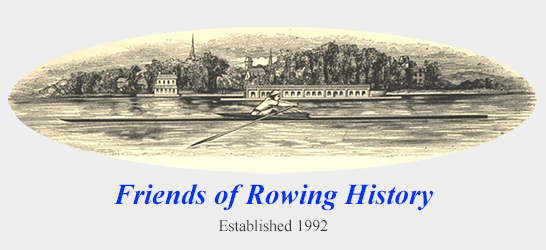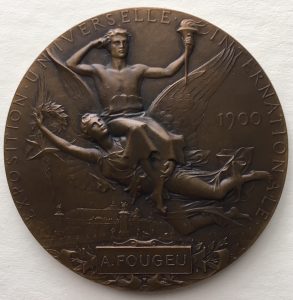A Brief Time Line of Rowing History
Thomas E. Weil
1900-1949
1900 · The Paris Olympics included six rowing events; the first Olympic eights contest was won by the Vesper Boat Club on the Courbevoie course on the Seine.
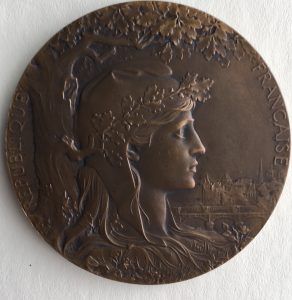
1903 · The American Rowing Association was formed with the goal of creating an American Henley regatta in Philadelphia.
The first Pacific Coast Intercollegiate Regatta took place between Washington and California in Seattle.
1904 · The only foreign boat to medal in the St. Louis Olympics rowing at Creve Coeur Lake was the second place Canadian eight; Vesper again won gold in that event.
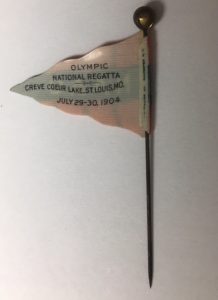
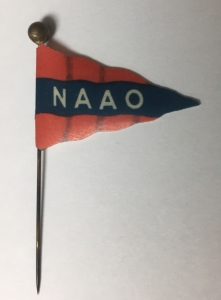
Hiram Conibear, an athletic trainer with no rowing experience, took over the rowing program at the University of Washington, and, after being joined by professional watermen George and Dick Pocock, developed a dynasty famed for turning out many of the prominent U.S. coaches of the 20th century.
1906 · The Grand Challenge Cup was won for the first time by a foreign crew, from Belgium, and London newspapers mourned the death of English rowing.
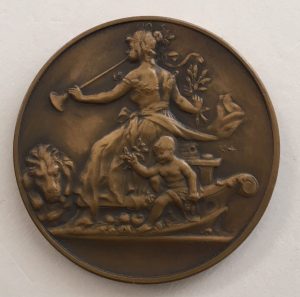
1912 · The U.S. was again not represented in the rowing events at the Stockholm Olympics, and Leander again won the eights.
The Pococks began building racing shells in their Seattle boat shop [Miller].
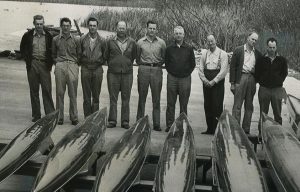
1914 · The Harvard junior varsity was the first U.S. crew to win the Grand Challenge Cup; 50 years later, every member of that crew returned for a reunion row.
1914-18 · Most boat racing was suspended during World War I.
1917 · The first intercollegiate lightweight contest, scheduled for May 12 between Yale and Pennsylvania whose coach, Joe Wright, introduced the concept to U.S. rowing, was cancelled when the U.S. entered the war on April 6.
Post WWI · Among the imperial icons under attack in the wake of the First World War was the classic “orthodox” style of rowing taught at Eton. Steve Fairbairn of Jesus College, Cambridge was the leading iconoclast, and while his teachings were often Delphic in comprehensibility, his coaching was consistently successful.
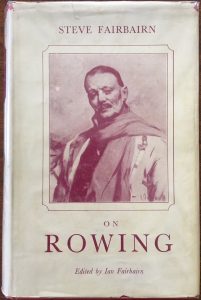
1919 · The first women’s collegiate eight-oared race took place in England between Cambridge’s Newnham College Boat Club and the London School of Medicine for Women.
The first intercollegiate lightweight race between Penn and Navy at the American Henley on May 31.
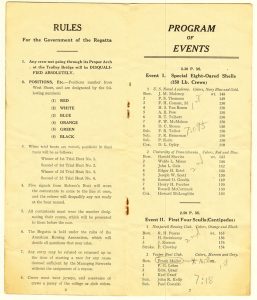
1920 · The Antwerp Olympics, during which the rowing events were contested in Brussels, featured wins by Jack Kelly in the single and (with Paul Costello) double-sculls within an hour, a Navy win in the eight, and a silver in the coxed-four. The eights began a run of U.S. victories in that event that lasted until another U.S. Naval Academy eight lost in Rome in 1960 (Yale won in 1924 and 1956, Cal-Berkeley in 1928, 1932 and 1948, Washington in 1936, and Navy again in 1952), marking a 36-year domination of the Olympic eight-oared event by one country that has not since been equaled.
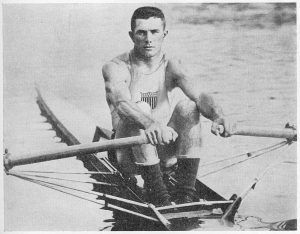
1922 · The first Harvard-Yale-Princeton 150 lb. race was held (May 20).
1923 · A western crew, the University of Washington, won the IRAs for the first time (June 28).
The Women’s Amateur Rowing Association was formed in Britain.
1924 · Jack Kelly added a victory in the 1924 Olympic double to his two 1920 wins, and Yale (with future best-selling baby doctor Benjamin Spock aboard) won gold in the eights on the Seine course at the Paris Olympics. The Swiss won the coxed-pairs and fours and the British won the single and coxless-four.
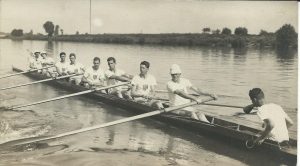
1926 · Steve Fairbairn established the Head of the River Race on the Thames.
The Oxford University Women’s Boat Club was formed.
1927 · The Boat Race was first broadcast by the BBC, and Oxford women first raced against Cambridge women.
With its entry in the Thames Cup, Kent School provided the first U.S. schoolboy crew to race at Henley; two years later, Browne and Nichols School became the first U.S. schoolboy winners at Henley, in the same event.
The Stotesbury Cup Regatta for interscholastic crews was organized in Philadelphia.
1928 · On the Sloten course at the Amsterdam Olympics, Paul Costello became the first American to win rowing gold in three consecutive Games (double in 1920, 1924 and 1928), while Cal-Berkeley continued the string of U.S. wins in the eights.
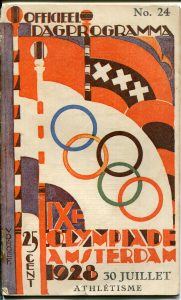
1929 · Columbia’s entry in the Thames Cup marked the first appearance of a lightweight crew at Henley.
One of the first women’s international rowing races took place in Poland with the contest between London’s Ace L.R.C. and the Warsaw women’s rowing club.
1930 · The first Women’s Head of the River Race was held on the Thames.
Frederick Brittain wrote Oar, Scull and Rudder, the first bibliography of rowing literature.
1932 · A Cal-Berkeley crew nipped Italy and Canada for the eights title at Long Beach Marine Stadium at the Los Angeles Olympics; the U.S. also triumphed in the coxed-pair and the double, while the British won the coxless-four and pair.
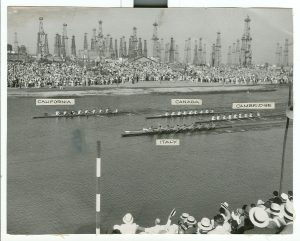
Bill Miller Collection
1933 · In the only year since 1895, other than war years, that the IRA was not held, local advocates sponsored a national championship contest at the Long Beach Marine Stadium in which Yale and Harvard took part.
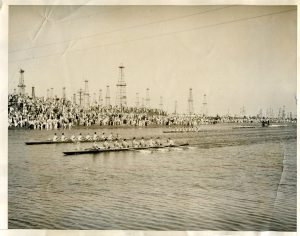
1934 · The Dad Vail Rowing Championships, named after a professional sculler and Wisconsin rowing coach – Harry Emerson “Dad” Vail, were established to accommodate more equitable competition for smaller collegiate rowing programs, and have been held on the Schuylkill in Philadelphia since 1953.
1935 · The Scholastic (prior to 1976, “Schoolboy”) Rowing Association of America was organized (May 14); women started competing in 1974.
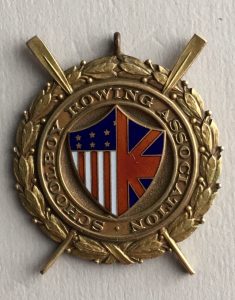
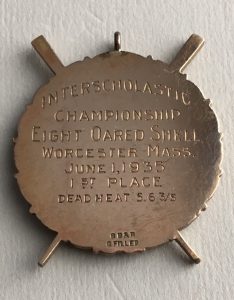
1936 · A German sweep of the Berlin Olympics rowing events at the Regatta Pavilion at Grunau was averted only by a University of Washington win in the eights, and the British triumph in the double (which marked Jack Beresford’s fifth medal (and third gold) over a span of five Olympics). Beresford, who ranks with Nickalls and Redgrave as one of England’s finest oarsmen, also accounted for seven Wingfields, four Diamonds and two Grands.
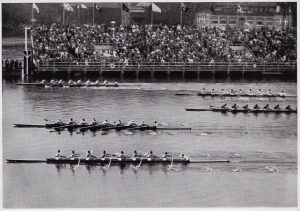
Parliament broke the A.R.A.’s grip on the definition of an amateur, opening the doors for broader participation at home and better British results abroad.
1938 · The Philadelphia Girls Rowing Club was founded.
Joe Burk won the Diamond Sculls in record time at Henley and won again in 1939. He received the Sullivan Award in 1940 as the outstanding amateur athlete in the U.S.
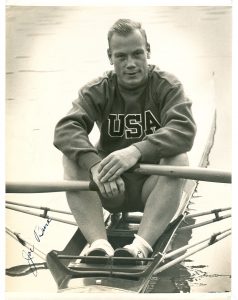
Earl Reinhold photographer,
Bill Miller Collection
Although the British Rowing Almanac ceased publishing records of professional scullers in 1930, at which time Phelps held the world professional sculling championship on the basis of his victory over Barry, perhaps the last world class oarsman to claim that championship was H.R. “Bobbie” Pearce, an Australian oarsman who, after winning the Olympics singles gold in 1928 and 1932, first won the professional title by defeating Phelps in 1933, and the American Bill Miller in 1934, then lost it in 1937, but regained it from Paddon (September 9). Others contested the title at least as recently as 1952, when Saul claimed it from Paddon after a race in Australia.
1941 · The Cambridge University Women’s Boat Club was formed.
1941-45 · Competitive rowing was generally suspended during World War II.
1946 · The Eastern Sprints were first held, in Cambridge for lightweights and in Annapolis for heavyweights. Not until they moved to Lake Quinsigamond in Worcester, Massachusetts in 1960 did both groups start rowing 2,000 meters at the same venue on the same days.
1947 · John B. Kelly, Jr., brother of actress Grace Kelly (who was to become Princess Grace of Monaco), won the Diamond Sculls at Henley (avenging his father’s exclusion from that event when he was the premier sculler in the world in the 1920’s), for which he received the A.A.U.’s James E. Sullivan Award as the nations outstanding amateur athlete.
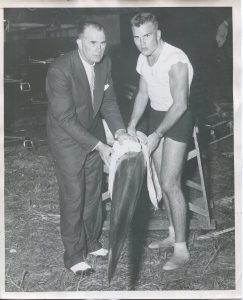
Bill Miller Collection
The New England Interscholastic Rowing Association held its first regatta, on Lake Quinsigamond.
1948 · Henley was again the rowing venue for the London Olympics, and the Cal-Berkeley eight harvested gold for the third time. The U.S. also won the coxed-four, while Britain was victorious in the coxless-pair and the double. Joe Angyal, the first great U.S. club lightweight, who dominated his class over 15 years, won 22 national titles (in the days before junior and senior classes, and with WWII interrupting his prime years), made the 1948 Olympic team in the double, setting a precedent for such subsequent “mighty mite” U.S. Olympians as Tony Brooks, Chuck Hewitt, Bill Belden and Larry Klecatsky. The first exhibition of rowing art and memorabilia was held at The Drill Hall in Henley in conjunction with the Games, leading to an appeal for a permanent rowing museum.
Results of the British Women’s Amateur Rowing Association regattas were published for the first time in the British Rowing Almanac.
